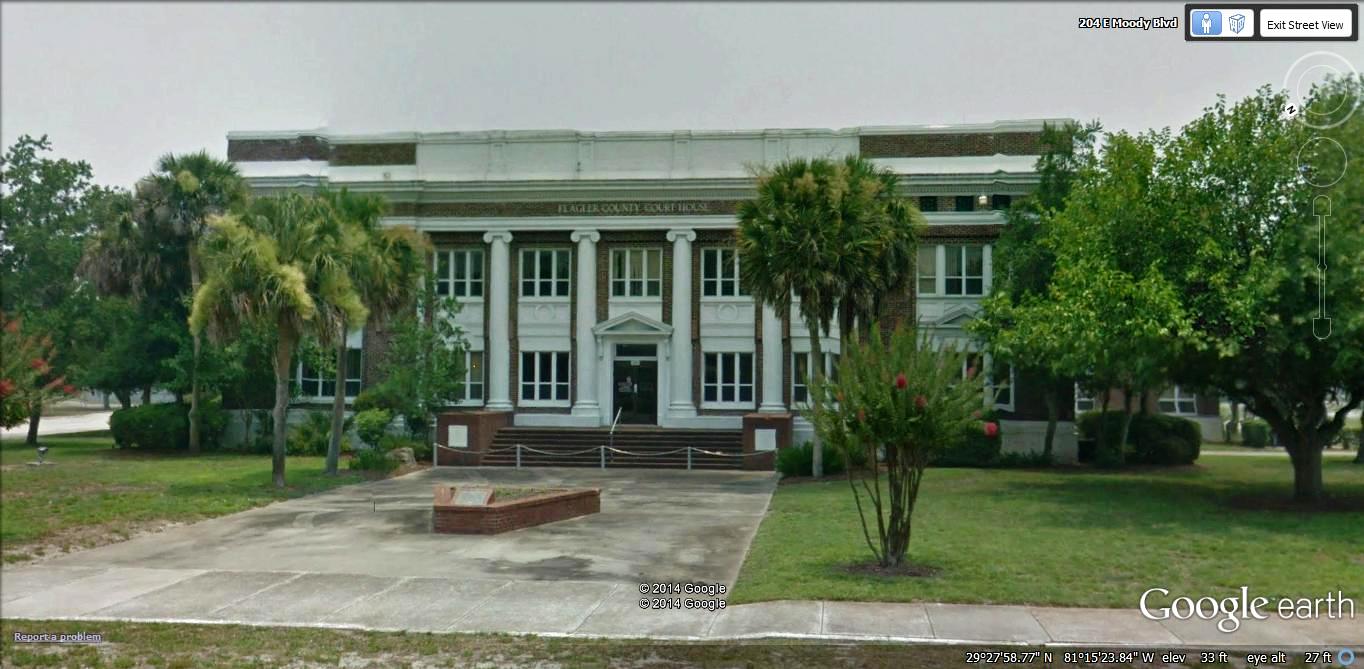Commentary: Old Bunnell Courthouse Interior Lacks Architectural Significance but has Promise
Tours were conducted of the old county courthouse in Bunnell yesterday to give both prospective buyers or users and the public a chance to see the property up close and ask questions.
 Palm Coast, FL – August 10, 2014 – A committee of seven tasked by County Commissioners to make recommendations for the disposition of the old Bunnell courthouse conducted public tours of the building yesterday. The committee’s goal was to provide potential users/buyers, elected officials and voters a chance to see the structure up close to dispel rumors that sprouted after the City of Bunnell declined the county’s gift of the building.
Palm Coast, FL – August 10, 2014 – A committee of seven tasked by County Commissioners to make recommendations for the disposition of the old Bunnell courthouse conducted public tours of the building yesterday. The committee’s goal was to provide potential users/buyers, elected officials and voters a chance to see the structure up close to dispel rumors that sprouted after the City of Bunnell declined the county’s gift of the building.
The 46,600 square foot building consists of two sections; the original two-story courthouse in front with a larger, more recent three-story addition in the rear.
First, the rumors. The building was not infested with mold. Second, while there had been a few leaks, repairs had been completed and there was no evidence of current leaks or serious water damage. The roof is reportedly in good condition, as are the air conditioners.
I was doubly surprised as I went through the building with the first tour group. Clearly, both parts of the building are in better condition than I had anticipated. But the sense of “historical significance” of the original building's interior was lost on me. It’s old and memorable, but not historically significant. The architecture is unimpressive, as are the woodwork and finish carpentry.
The original building is cut up into many small rooms. Several load bearing walls and vault storage rooms restrict reconfiguration of space. Some in my tour group suggested it would be appropriate for law offices. That use would also be historically appropriate.
.jpg) The rear addition makes no pretense toward architectural significance. It’s simply a rectangular, three-story commercial building with several large rooms. It’s in pretty good condition and could be easily reconfigured for almost any use.
The rear addition makes no pretense toward architectural significance. It’s simply a rectangular, three-story commercial building with several large rooms. It’s in pretty good condition and could be easily reconfigured for almost any use.
I think it’s unlikely that the combined structure will be suitable for a single user. It’s a lot of square footage and the two sections of the building are dissimilar. More likely it will be divided among several users.
Opening the building to a public tour was a great idea. I had commented weeks ago that the best and highest use might be a vacant lot. The committee has to consider all possibilities, but after taking the tour, I’m thinking the building will find users.



HAZMAT ISSUES
Considering the age of both structures what is the results of the lead and asbestos reports.I am confident there is is very strong possiblity lead is in the paint and pipes and asbestos is in the insulations and roofing products of that vintage.
if these hazmat issues do prove positive what are the remediation cost to remove or encapulate these products.
What burden will the taxpayers have to bear regarding these potential problems.
Does GoToby.com have access to these reports?
Old Courthouse
In a commission meeting almost 7 years ago I suggested that the building be sold. Put the property back on the tax rolls. Fellow Commissioners disagreed.
In 2014 I applied to be on the ad hoc committee but was not selected. Like TOBY, I would have joined the committee with an open mind and made recommendations BASED UPON TODAY’S CONDIDTIONS in the building.
One of the commissioners, who voted against my being on the ad hoc committee, said he was told that I already had decided that the structure should be demolished. Not true! But I wish the committee the Wisdom of Solomon.
Reply to Tom
Reply to Tom
You have raised some good questions. I do not have nor have I seen any reports. However, I’m quite certain that I heard the question of asbestos asked during the tour. I believe the answer was that it is not a significant issue. The exterior walls of the original building are solid brick with little or no insulation.
The potential taxpayer burden should hazardous materials be found would depend upon the final disposition. If the county rehabs the structure, I assume remediation would be taxpayer funded but there may be grants available for such work. If another party acquires the structure “as is,” the buyer would be responsible.
If nothing happens, the county will continue to be liable for the building’s ongoing welfare.